
Here’s What Hyundai Offers On The Santro Anniversary Edition For Rs...
- Oct 22, 2019
- Views : 16992

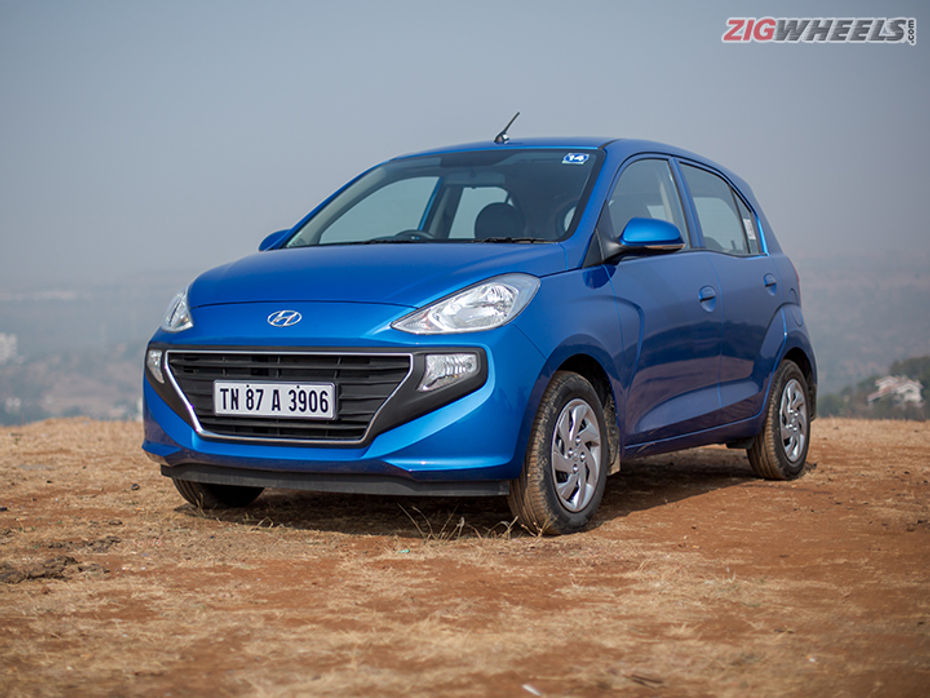
Longer, wider and better looking, India’s ‘favourite’ family car (as Hyundai would like us to believe) has grown up. And it needed to. It’s no longer playing in the bare bones entry-level segment as its predecessor and now sits a segment above the Eon in Hyundai’s lineup, competing with the likes of Tata’s Tiago and Maruti’s Celerio.

It’s also feature-rich and at the first drive, we were quite impressed with the spec sheet and the finish levels being offered at this price point. We’ve put both the manual and AMT version to test and spent a good 500km behind the wheels of both to answer the question - Who is the new Hyundai Santro aimed at in 2019?
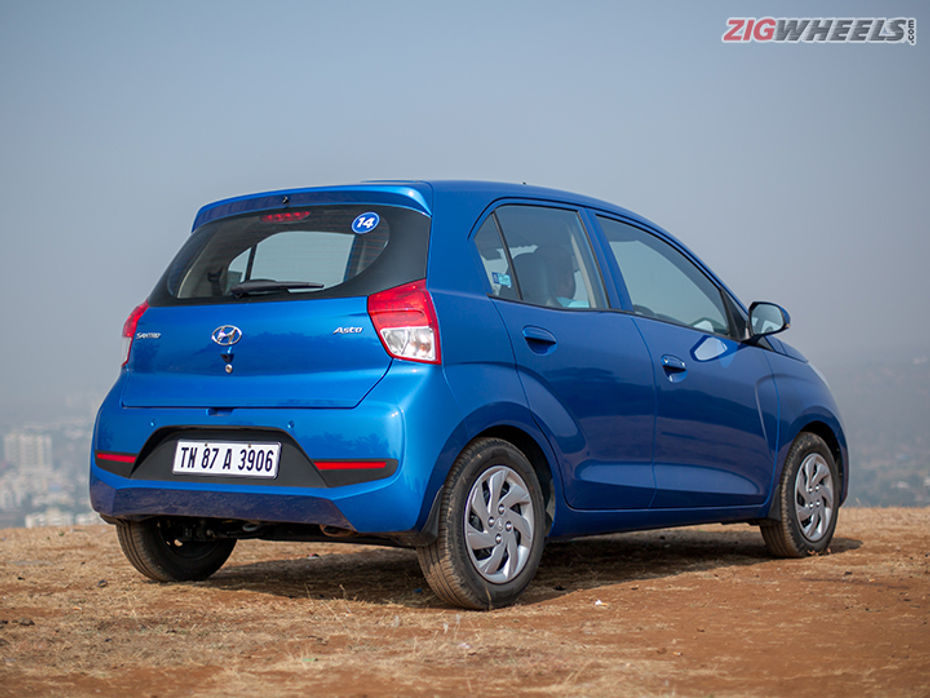
Design
Like the little hatch that was launched back in 1998, the new Santro manages to please only half of its audience. The other half will find its rounded ends, wide grin, and the two accent creases on the front and rear wheel arches a little odd. But like we noticed at the first drive, it is much more pleasing to look at in the flesh. Visually, it’s not quite a tall boy design either.
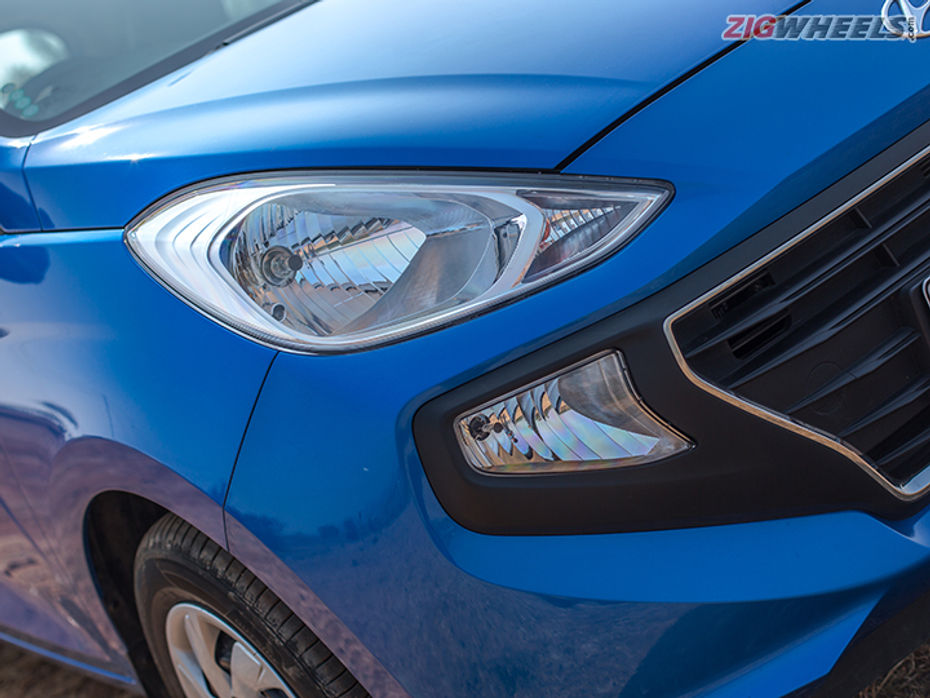
This is down to the fact that it is actually shorter than the old Santro by 30mm and that wide grille with its even wider plastic surrounds help give you the impression that it’s a lower and wider car. It’s a definite step up in size over the Eon but still smaller than the Grand i10. In comparison with the competition, it’s wider than the Celerio and the Datsun GO and just 2mm narrower than the Tata Tiago. At 2400mm, its wheelbase is as long as the Tiago’s but shorter than the rest of its competition.
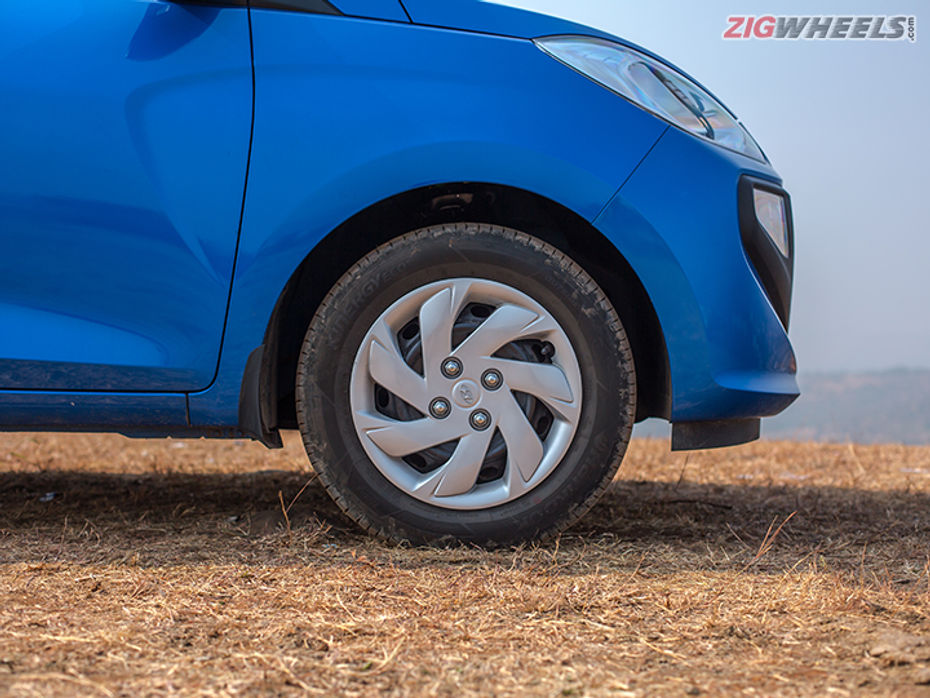
Interiors & features
Hyundai has become known for its interiors of late and the Santro is no different. The quality of the materials and the fit and finish of anything in the cabin leaves little to be desired, especially at this price point. The side air-con vents with their propeller design are quite striking but miss out a little in the functionality department in that they cannot be switched off.
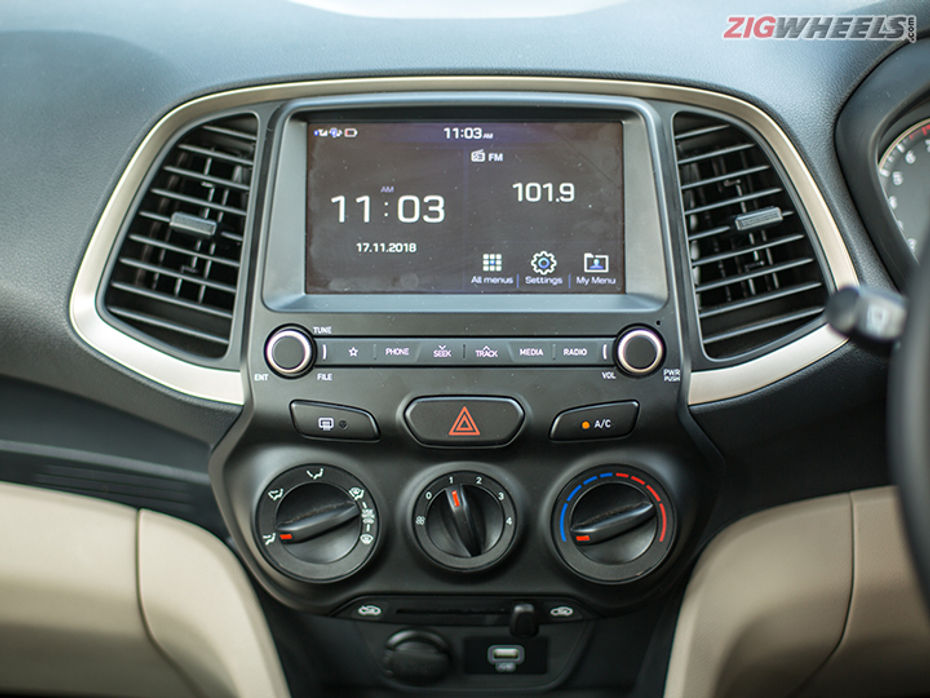
The window switches are placed at the rear of the gear shift console. While it probably helped Hyundai in saving some cost on the design, we wish it was a little more ergonomic. The placement of the window controls takes some getting used to as they are set side by side and you have to remember which one is which. A more intuitive design would have seen them placed on the side of the gearshift control with the front window switches placed in front of the rear window switches on either side.

There is also no seat height adjustment or even tilt adjustment for the steering wheel though I (5ft 10in) was able to find a reasonable driving position. This may be an issue for over or undersized drivers though as it won’t let them adjust the height of the seat or tilt the steering downwards for a better view of the instrument cluster. As far as space is concerned, the Santro is still a good step up from the likes of the Eon and even the Alto K10. And not surprisingly, it is similar to the Grand i10. In fact, the leg and knee room is surprisingly similar even though the Santro is narrower.
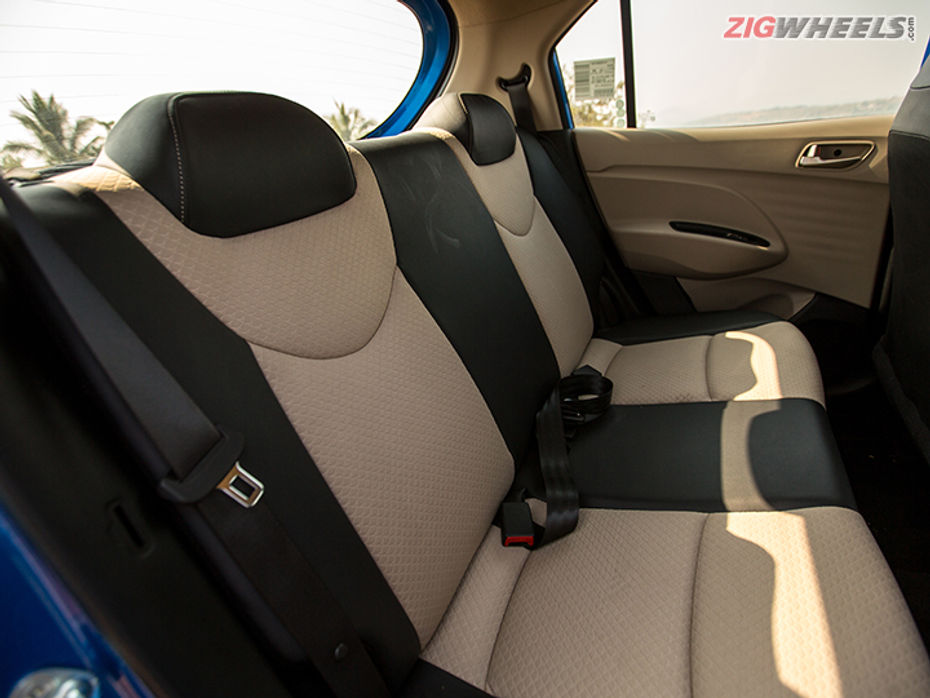
The top-spec Asta variant is nicely loaded with air-con vents for rear passengers, rear parking sensors and a parking camera, dual airbags and power windows all around. The touchscreen infotainment system features Android Auto, Apple CarPlay and Mirrorlink.
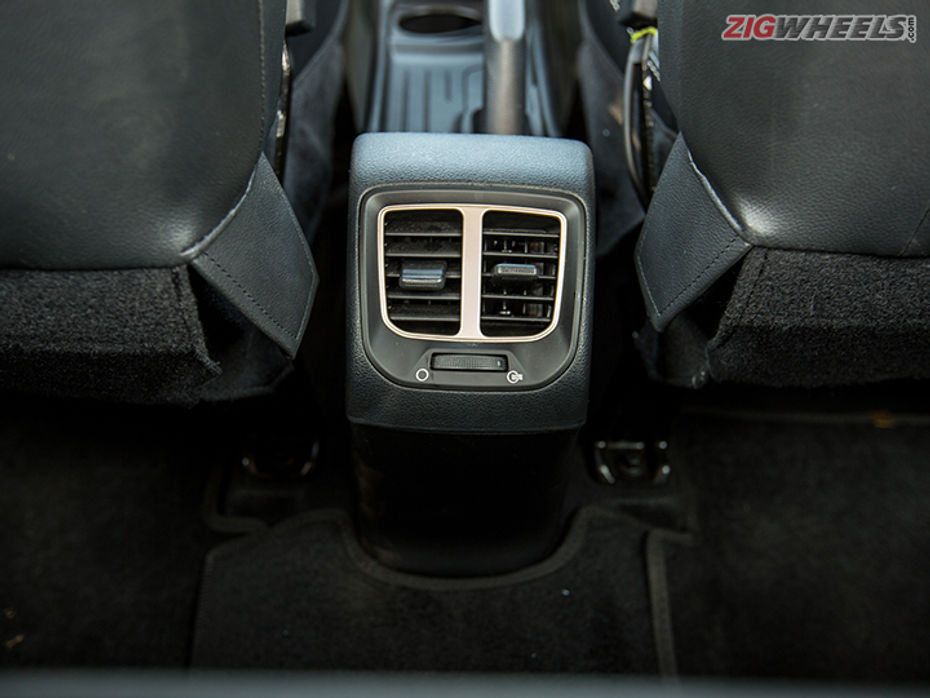
A lot of these features are also available in the lower Sportz variant as well. Unfortunately, dual airbags are only available in the top-spec Asta variant. So we’d steer clear of the lower variants if possible. This is a strange miss from Hyundai and it should have taken the proactive step to offer dual airbags as standard across all variants before they become mandatory.
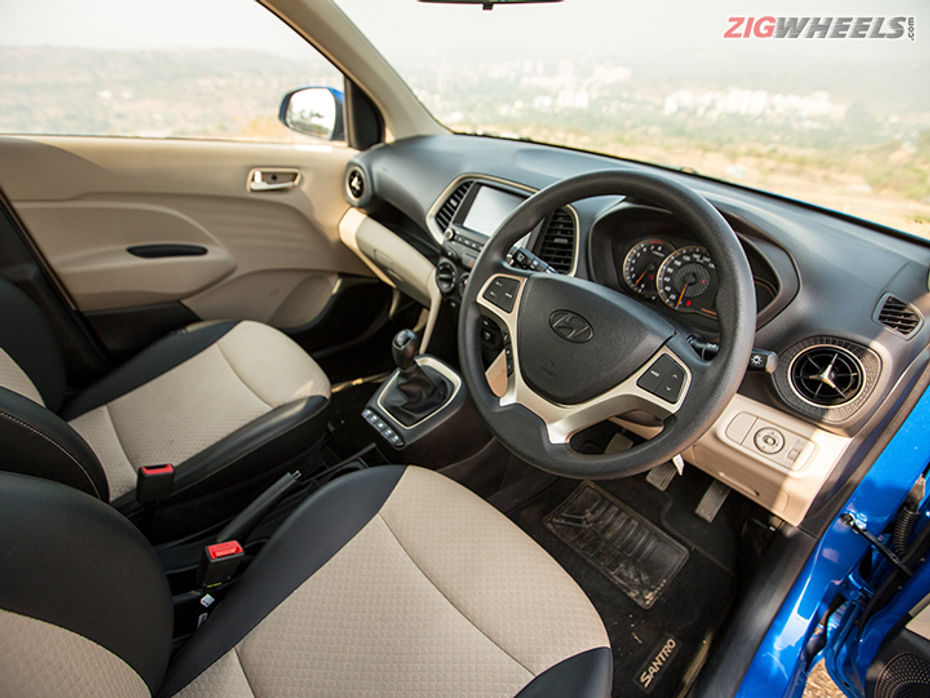
Other misses is frilly tech like LED DRLs or alloy wheels which will be a disappointment for quite a few buyers. What’s also annoying is that the rim PCD (mounting type) is not the most common size, so finding aftermarket options will also be difficult. The Hyundai Santro with dual airbags has scored two stars in the Global NCAP crash test, under the #SaferCarsForIndia initiative.

Performance
As is the case with all the petrol cars we have driven of late, the gearing is fairly tall. This is quite unfortunate as the 1.1-litre, 4-cylinder engine feels quite happy to rev. Even the exhaust note is raspy and sporty. This all changes on the move where the tall gear ratios really dull down the response of the engine. The taller ratios give you great driveability in the city and the engine is also very flexible, pulling cleanly from as low as 2000rpm. So you can easily stay in either third or fourth gear in the city quite happily, but acceleration is always slow. So instead of pushing on the accelerator for an overtake, you need to shift down a gear first. This is also reflected in the third and fourth gear roll-on figures. The Santro posts 11.91s when accelerating from 30kmph to 80kmph in third gear and 21.31s 40kmph to 100kmph in fourth. Similar times to the Tiago petrol, which too needs you to work the gears to make progress. The obvious benefit of this is better fuel efficiency and the manual gearbox managed to deliver 14.25kmpl in the city and 19.44kmpl on the highway.
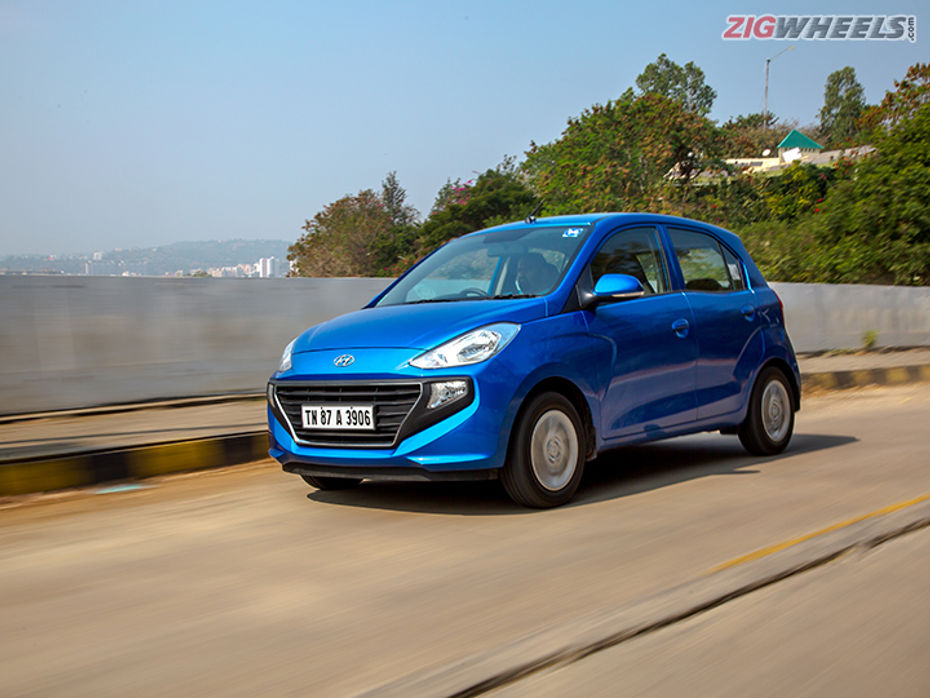
With the AMT, the experience is even more leisurely. The shifts are slow and the shift logic also favours a laid back approach. So you need to go with the flow of traffic rather than darting for gaps. If you do try to push the pace, the Santro will chide you with a slow and slightly jerky shift and not much acceleration. Once you do start driving the Santro AMT the way it wants you to, you will be rewarded with a fairly smooth experience with very little head nod compared to the other AMTs we have driven of late (Maruti Suzuki Dzire, Tata Tiago, Kwid Climber AMT, Maruti Suzuki Vitara Brezza).
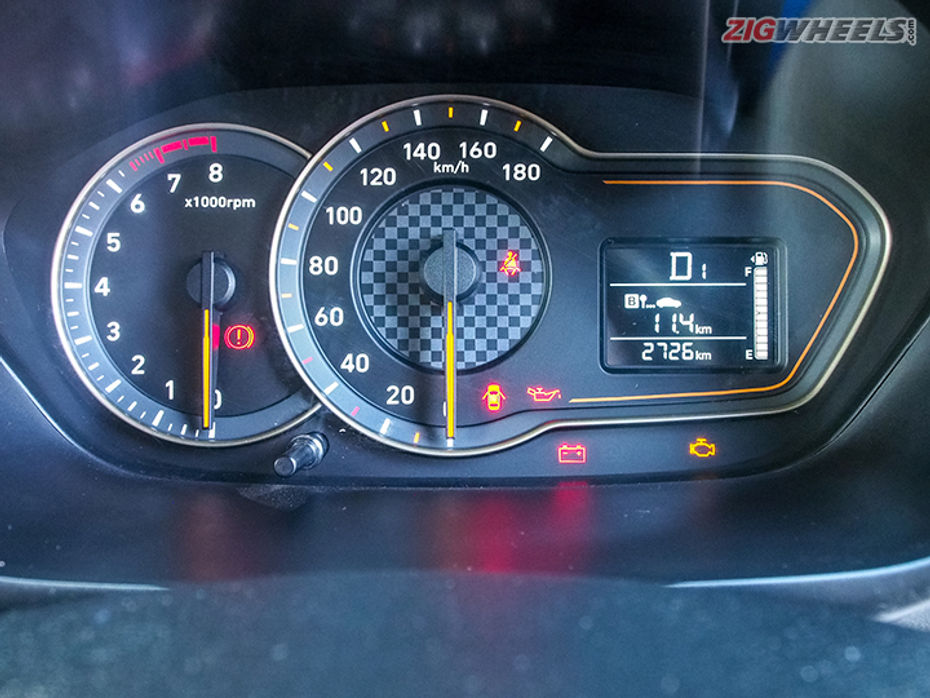
Even when pulling away and while crawling through traffic, the AMT stays quite smooth and you don’t have to feather the accelerator quite as precisely as is the case with most AMTs. To sum it up, it’s in no way the perfect AMT but if you can drive it at a leisurely pace, then it can be a smooth experience. With a computer taking care of the shifts, efficiency does drop down in the city a little and the AMT posted 13.78kmpl. But on the highway, both gearboxes are near identical at 19.42kmpl.
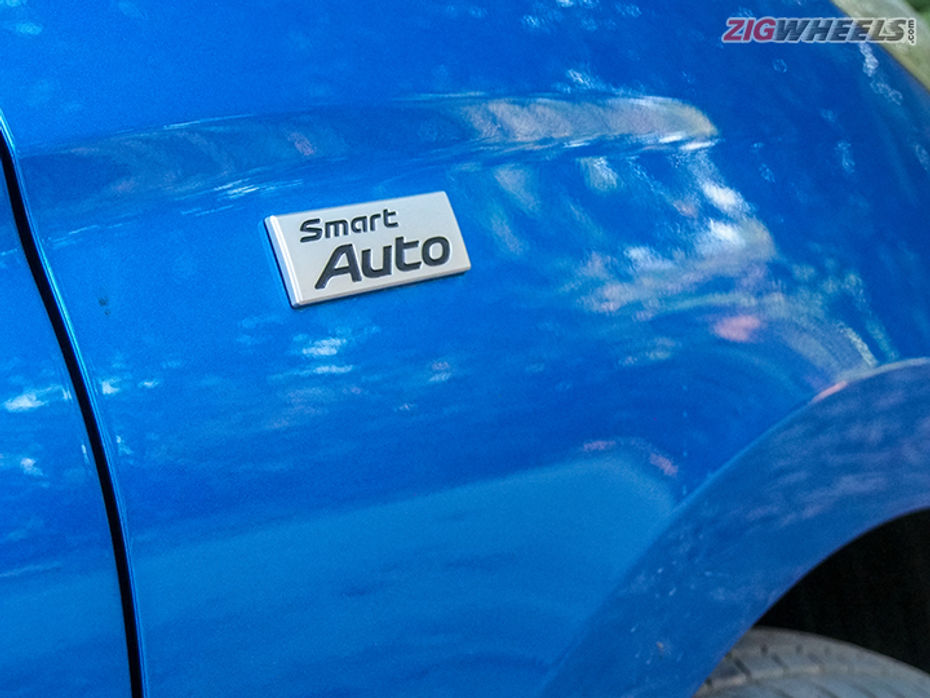
Ride and handling
The suspension set up of the Santro is set more on the stiffer side. At city speeds and over road imperfections and small undulations, it’s quite composed. But over larger bumps and speed breakers, a little harshness can be felt and the rear suspension tends to bounce back rather noticeably. At 80kmph, the sound insulation is quite nice. But as you reach 100kmph, road noise from the wheel wells and wind noise increases considerably. The wheels wells also don’t have any cladding material and ever so often you can hear pebbles kicked up by the tyres rattling around inside them. These little niggles remind you that this is still just a mini step up from the entry-level A segment.
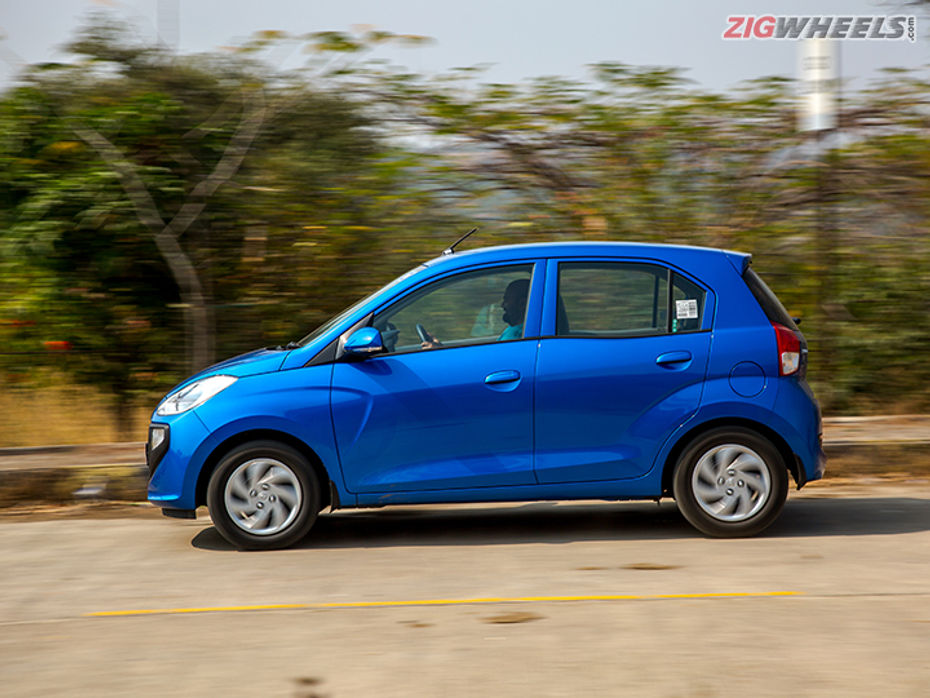
One surprise is the steering feel. It’s pleasantly firm (compared to the light setups we have seen from Hyundai in the past) and direct as well, making it really nice to use in the city. The gearbox in the manual is also sure slotting, even if the throws are a little long. This all combines to give you a pleasant driving feel in the city. Body roll is quite evident though. It’s never so much that it ever feels unstable but enough that, like the gearing, it’s clear that the Santro wants to be driven in a gentle fashion.
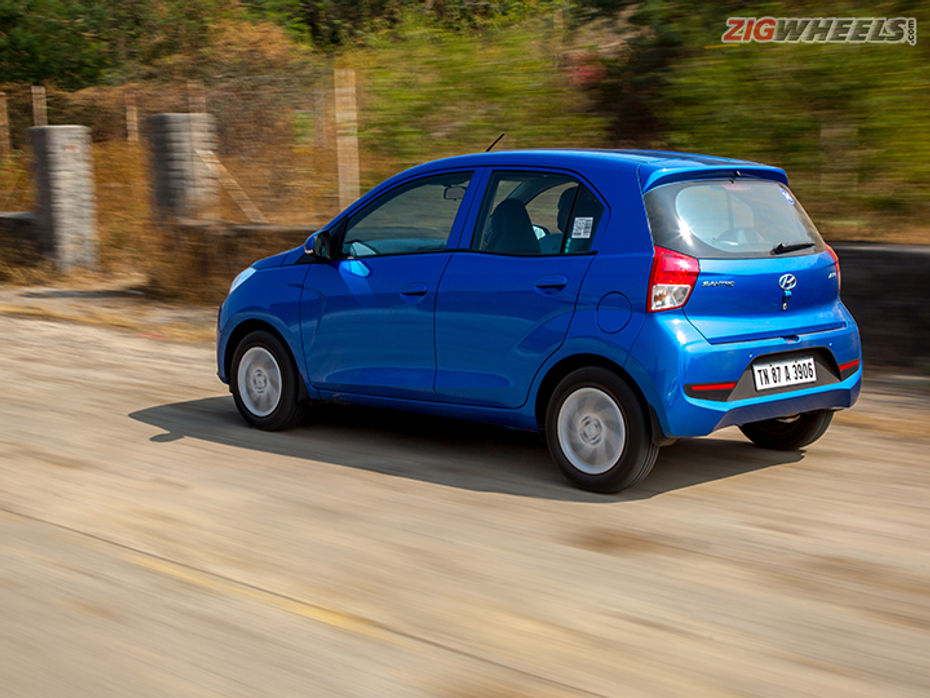
Verdict
The new Santro should make proud owners of any nuclear family. It’s a fitting replacement to its much loved all-rounder predecessor. The little hatchback is perfectly suited to cruising around in the city all day and won’t even feel out of place on that weekend trip to the nearby hill station either. We strongly suggest you look past the lower variants and set your sights on the top-spec Asta variant for its passenger airbag.

Drive it in a relaxed manner and it will reward you with smooth and carefree progress. If you are laid back, care two hoots about the traffic around you and spend a majority of your time in the city, then the AMT will reward you with smooth progress with little to none of the annoying head nod associated with this budget tech. But then again, we have to mention that since the AMT is only available in the Magna and Sportz variant, it only comes with a driver airbag. All in all, for Rs 5.45 lakh (ex-showroom Delhi), the Santro Asta makes the most sense. It packs in a lot, is simple and hassle-free to drive and ticks all the right boxes, leaving very little to be desired.

Here’s What Hyundai Offers On The Santro Anniversary Edition For Rs...

New Maruti WagonR Launch On January 23, Same Day As Tata Harrier

Hyundai QXi Sub-4m SUV Teased; Likely To Launch By May 2019

Hyundai Santro Lineup To Get A Revision And New Base Variant

Maruti Suzuki Alto K10 First Drive | Keeping It Simple, Stupid |...

Tata Tiago iCNG AMT: Balancing Convenience and Cost
 Maruti Alto K10
Maruti Alto K10
 Tata Tiago
Tata Tiago
India's largest automotive community
 Here Are Some Adrenaline Pumping Experiences From Auto Expo 2025 That You Should Not Miss!
Here Are Some Adrenaline Pumping Experiences From Auto Expo 2025 That You Should Not Miss!
 All You Need To Know About The Surprise Element At Auto Expo 2025: BMW iX1 LWB
All You Need To Know About The Surprise Element At Auto Expo 2025: BMW iX1 LWB
 Hyundai Creta Electric Reaches Dealerships, Here’s A List Of Its Pros And Cons Before You Check It Out!
Hyundai Creta Electric Reaches Dealerships, Here’s A List Of Its Pros And Cons Before You Check It Out!
 MG Showcases A PHEV At Auto Expo 2025: The MG HS PHEV
MG Showcases A PHEV At Auto Expo 2025: The MG HS PHEV
 Hyundai Creta
Rs. 11.10 Lakh
Hyundai Creta
Rs. 11.10 Lakh
 Hyundai Venue
Rs. 7.94 Lakh
Hyundai Venue
Rs. 7.94 Lakh
 Hyundai Verna
Rs. 11.07 Lakh
Hyundai Verna
Rs. 11.07 Lakh
 Hyundai i20
Rs. 7.04 Lakh
Hyundai i20
Rs. 7.04 Lakh
 Hyundai Creta Electric
Rs. 17.99 Lakh
Hyundai Creta Electric
Rs. 17.99 Lakh
 Maruti Swift
Rs. 6.49 Lakh
Maruti Swift
Rs. 6.49 Lakh
 Maruti Baleno
Rs. 6.66 Lakh
Maruti Baleno
Rs. 6.66 Lakh
 Maruti Wagon R
Rs. 5.54 Lakh
Maruti Wagon R
Rs. 5.54 Lakh
 Tata Tiago
Rs. 4.99 Lakh
Tata Tiago
Rs. 4.99 Lakh
 Maruti Alto K10
Rs. 3.99 Lakh
Maruti Alto K10
Rs. 3.99 Lakh